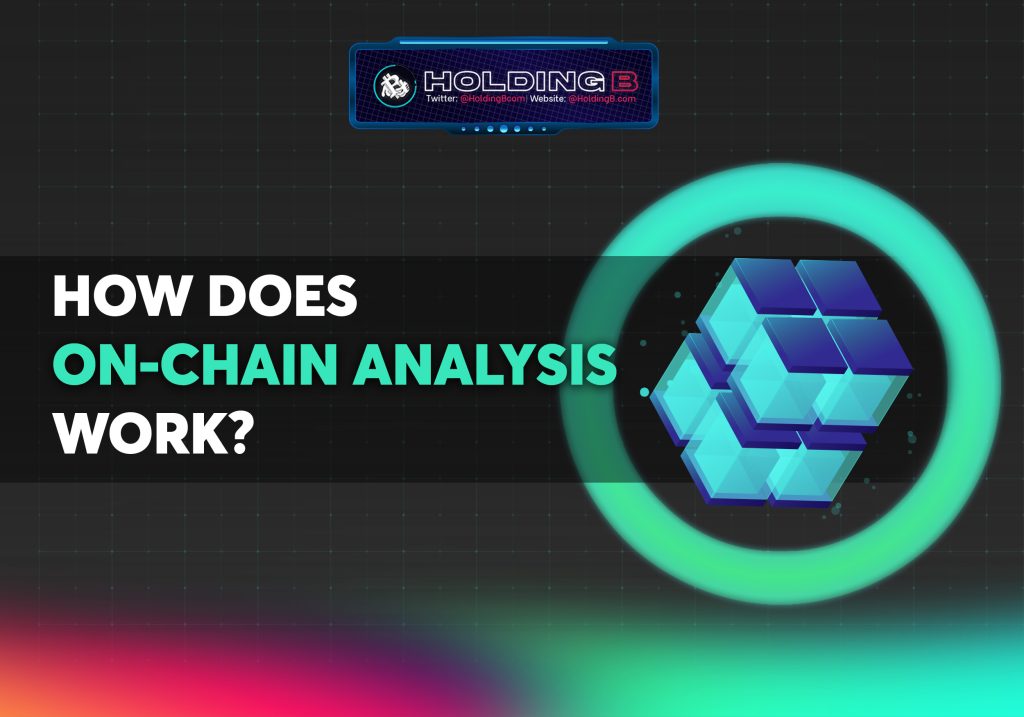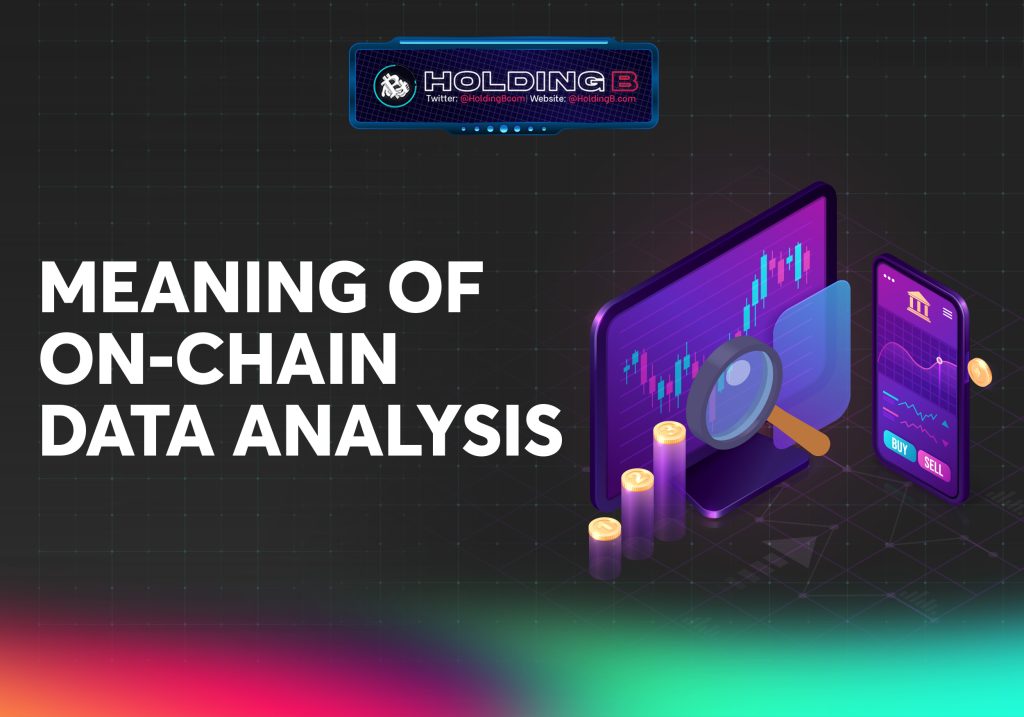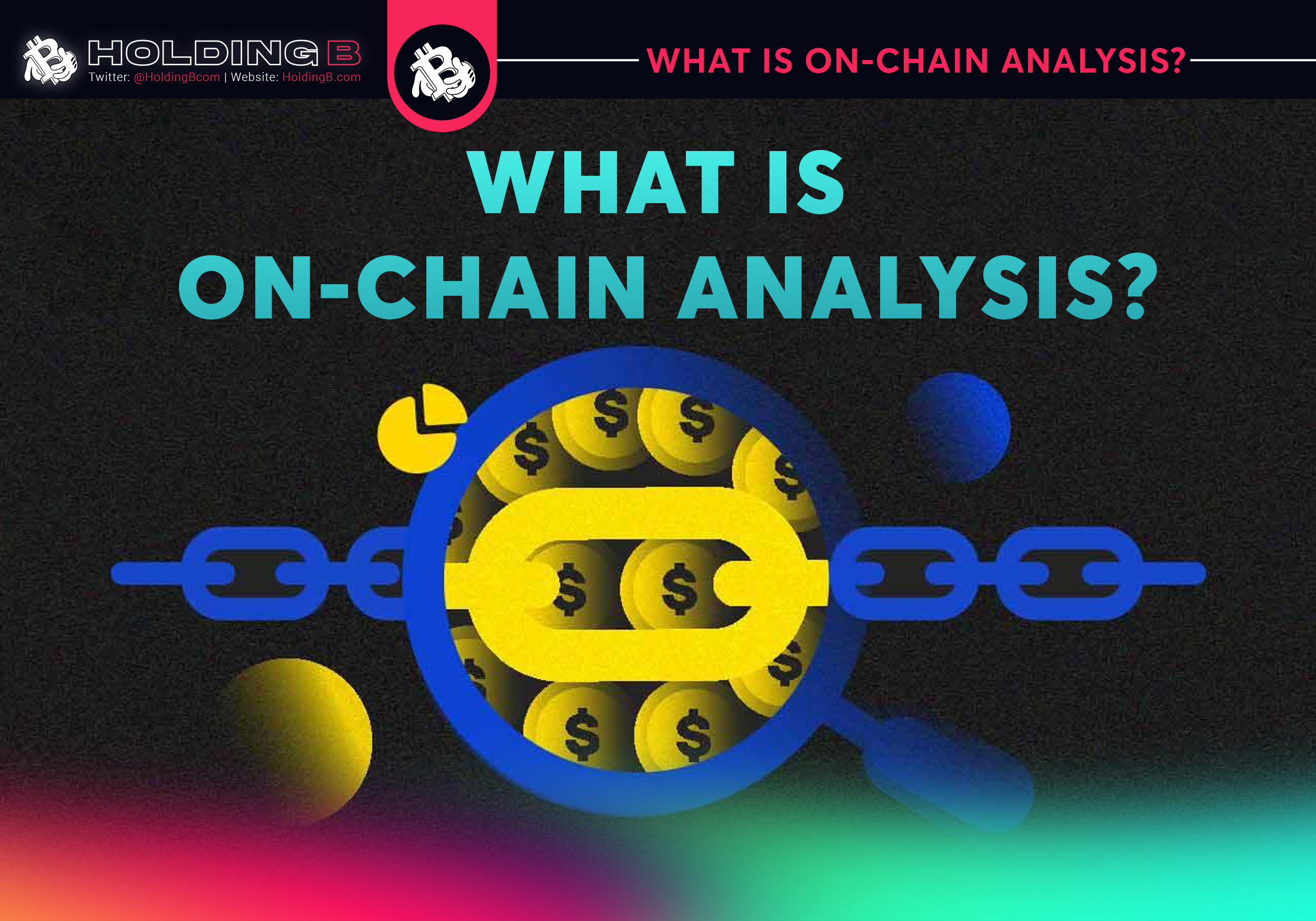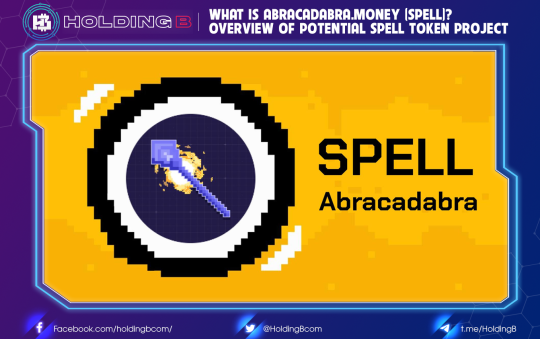Hi HoldingB readers, today our team brings you information about On-chain analysis ! Are you ready to learn it?
WHAT IS ON-CHAIN ANALYSIS?

On-chain analysis is an emerging field that involves examining the fundamentals, utility, and transaction activity of a cryptocurrency and its blockchain data.
On-chain analysts attempt to improve their understanding of a network in order to predict future price movements through analyzing a variety of metrics. As we’ll discuss below, on-chain analysis involves gaining insights from the following types of blockchain data:
- Transaction volumes
- Block details such as miner rewards
- Price correlations
- Exchange inflows and outflows
For example, IvanOnTech Academy provides the following use case of on-chain analysis for Bitcoin:
Take Bitcoin for example. With on-chain analytics, one can examine user adoption and miner activity. With this, they can determine whether or not the market price is justified.
Similar to how fundamental analysis of equities aims to understand the true value of a company, on-chain analysis uses publicly available blockchain data to value a network.
Traders and investors also often pair on-chain analysis with technical analysis to determine suitable short-term entry and exit points for crypto assets.
In short, one of the most important use cases of on-chain analysis is using publicly available transaction and wallet data to understand the value of a blockchain network as opposed to speculative hype surrounding the crypto-asset.
WHAT IS ON-CHAIN DATA?
On-chain data includes the information of all occurred transactions on a certain Blockchain network – or put differently – all information written on the blocks of a Blockchain. In case of a public Blockchain, this information is available for everyone to see. The data can be broadly classified into three distinct categories:
- Transaction data (e.g. sending and receiving address, transferred amount, remaining value for a certain address)
- Block data (e.g. timestamps, miner fees, rewards)
- Smart contract code (i.e. codified business logic on a Blockchain)
How does On-chain analysis work?

The metrics for on-chain analysis can be broadly classified into three categories — crypto market capitalization, an asset’s HODL status, and future prospects of the cryptocurrency.
Market Capitalization
The market capitalization of a cryptocurrency defines the net value of the blockchain network. The total value of a network is defined as the multiplication of the crypto’s price by its total circulating supply. Apart from determining the net worth of the network, we can also use market capitalization to evaluate the market size, adoption, and risks involved with the crypto asset.
Hold Status
Analysts use a metric called the HODL wave to determine the trend in the market and the age of the cryptocurrency held by the user. The HODL wave tells analysts whether traders are HODLing the asset or selling it quickly. It determines the mood of the market and the perspective of the HODLers i.e., if they feel the price may fall or if they anticipate a rise.
On-chain analysts also use coin concentration metrics to determine the concentration of “whales” and large investors in the network. For example, say there is an asset where a few addresses hold a significant percentage of the token, this means that the whales and large-scale investors can easily manipulate the market by dumping the tokens. Therefore, analyzing the concentration of large token HODLers is very critical to minimizing crypto investing risks.
Future Prospects of a Cryptocurrency
To understand whether a crypto asset is gaining or losing traction among investors, the future open interest can be analyzed. Also, factors like the correlation between the token and Bitcoin’s price, as well as the total exchange inflows and outflows.
Correlating a token or altcoin’s price to that of Bitcoin minimizes risk for investors because it can help them cut down losses for cryptos that are more strongly related to Bitcoin price drops. Moreover, inflows and outflows of certain tokens or coins from an exchange (over certain time periods) can help on-chain analysts evaluate the asset’s adoption status while acting as an alarm signal for high net-worth individuals and institutional trading activities.
Meaning

Some of the benefits that you can get when doing On-chain data analysis are as follows:
- Credentials: On-chain data “does not lie” so it will provide us with accurate and objective information about what is happening in the market in real-time. This is the most trusted source of information today because Blockchain technology is built for transparency, and it is very difficult to be hacked or changed.
- Real-time tracking: On-chain data keeps us updated on the behavior of market players as they trade. This is especially important when monitoring the performance of Whales, who possess a wealth of financial and informational resources that can lead the market.
- Predict and make investment decisions: On-chain data analysis helps us to anticipate situations and make rational investment decisions.
For example: In case the price drops, by tracking On-chain data, you know that: large wallets are not selling and continue to buy, maybe this is the time to consider buying, should not sale out be sold in bulk.
Some notes when analyzing On-chain data
- Requires a lot of knowledge and experience: This is an in-depth tool, fast, accurate and constantly updated information, so it requires users to equip themselves with platforms as well as multi-dimensional perspectives to evaluate. value the information collected.
- Update information regularly: On-chain data happens in real-time, but market behavior changes constantly, so information also needs to be updated regularly, in order to act quickly.
- Aggregate and analyze information in bulk: In order to make a rational decision based on On-chain data, it requires you to perform data analysis with large volumes and especially objects has a great impact.
Good luck in your investment! See ya in the next article !
Don’t forget to follow useful articles about Crypto Market from team Holding B !!!
- Telegram Channel: https://t.me/HoldingBcom
- Telegram Group : https://t.me/HoldingB
- Website : https://holdingb.com/
- Twitter : https://twitter.com/HoldingBcom





